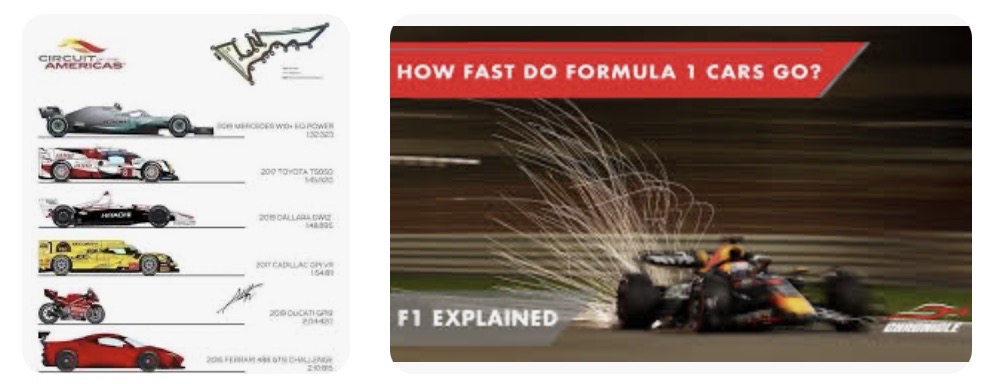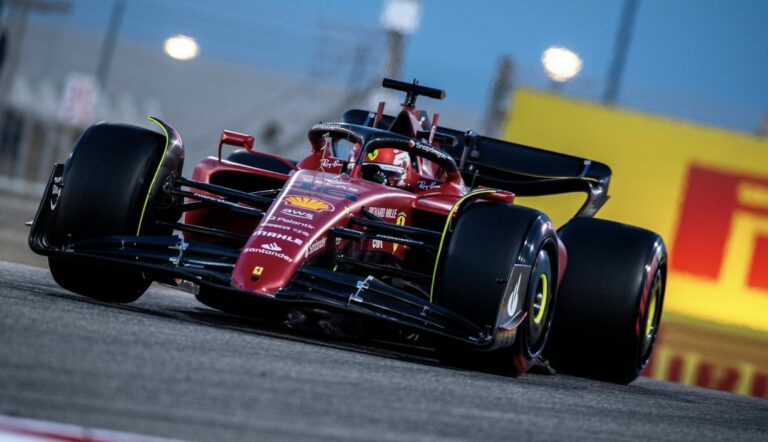How Fast Do F1 Cars Go? Ultimate Speeds, Averages, and Cornering
Formula 1 cars are not simple vehicles; they are highly complex, highly engineered machinery, made to traverse at extreme speeds, with extreme precision, and extreme performance. F1 cars are designed to thrive, whether charging down straights at full throttle, negotiating tight corners at high speed, or withstanding the punishing challenges of a Grand Prix. So how fast do these machines actually run? Let us see what they are capable of in terms of top speeds, average performance, and cornering.
Top Speeds of F1 Cars
And that is a higher average than most cars are ever going to achieve, with a staggering top speed met by F1 cars being as much as what ordinary vehicles cannot dream of. Due to their aerodynamic efficiency, lightweight construction, and hybrid power units, these machines can reach 360 km/h (224 mph) or more on straights.
Why F1 Cars Go as Fast as They Can
Hitting these speeds is not a small feat. It takes an ideal interplay of power, aerodynamics, and precision engineering. The key factors include:
- Aerodynamics: On a racing car, every part, from the front wing to the rear diffuser, is designed to minimize drag and produce downforce.
- Power Units: V6 turbo hybrid engines with over 1,000 horsepower for maximum acceleration and speed.
- Track Design: Circuits with long straights — Monza, for example — are where F1 cars can fully flex their muscles.
The Fastest Tracks in F1
- Monza, Italy: The “Temple of Speed,” Monza is dominated by long straights, with cars reaching speeds of 360 km/h.
- Baku City Circuit, Azerbaijan: Featuring a 2.2-km straight, the cars here hit speeds of 350 km/h.
- Spa-Francorchamps, Belgium: Known for high speed and cornering, with cars reaching 330 km/h.
What is an F1 Car’s Speed in km/h?
F1 cars are commonly measured in km/h (kilometers per hour) to highlight their global nature. On average, F1 cars achieve:
- Straight-line speeds: 305–360 km/h based on track configuration.
- Average race speed: 220–250 km/h, including corners and braking zones.
Such speeds demonstrate the ability of F1 cars to suit different circuits and conditions.
The Influence of Circuit Design on Speed
Each circuit has its own challenges that affect car performance. For example:
- High-Speed Tracks: Circuits like Monza and Silverstone favor high speeds.
- Street Circuits: Tracks such as Monaco and Singapore emphasize precision over speed and have narrower corners and shorter straights.
How Fast Do F1 Cars Average?
Top speeds catch the eye, but average speeds throughout a race are even more impressive. In a Grand Prix race, F1 cars can easily achieve 220–250 km/h average speed.
What Factors Contribute to Average Speeds?
The average speed of an F1 car during a race is influenced by the following factors:
- Circuit Design: High-speed tracks, such as Spa, yield better averages than twisty tracks, such as Monaco.
- Weather: Rain or extreme temperatures can affect grip and performance.
- Race Strategy: Pit stops, safety car periods, and tire management can affect average speeds.
Examples of Average Speeds
- Silverstone, UK: Drivers average 250 km/h on the fast corners.
- Monaco: 160 km/h is the average speed on its narrow streets.
Cornering Speeds of F1 Cars
No less impressive are the F1 cars’ capabilities in cornering − often at speeds that seem preposterous. With advanced aerodynamics, enhanced traction, and driver skill, these cars can push through high-speed turns at speeds of up to 290 km/h.

How Do F1 Cars Corner So Fast?
- High-Speed Corners: Depending on its aerodynamic configuration, the car takes Eau Rouge in Spa-Francorchamps at a speed of 290 km/h.
- Tight Hairpins: Cars slow down to about 50 km/h at the Monaco Hairpin.
- Sweeping Turns: Corners like Suzuka’s “130R” allow speeds up to 310 km/h, balancing speed with control.
The Science Behind Cornering
- Downforce: F1 cars create massive downforce, pushing themselves onto the track for reduced slip.
- Grip: Soft compound tires maximize traction during sharp turns.
- Braking Systems: Advanced braking technology enables drivers to decelerate quickly without losing control.
What Makes F1 Cars So Fast?
The unique speed of F1 cars results from a combination of power units, aerodynamics, and lightweight construction.
Hybrid Power Units
Modern F1 engines rely on hybrid setups, where a turbocharged internal combustion engine is combined with energy recovery systems (ERS). These engines:
- Produce in excess of 1,000 hp.
- Maximize fuel economy without sacrificing performance.
- Repurpose energy from braking and heat to increase speed.
Aerodynamics
Aerodynamics are essential for speed and stability. Key features include:
- Front Wing: Guides airflow to generate downforce and minimize drag.
- Rear Diffuser: Directs airflow beneath the car to create extra downforce.
- DRS (Drag Reduction System): Reduces drag on straights for greater speed.
Lightweight Construction
F1 cars weigh only 798 kg (1,759 lbs), including the driver. The chassis is made from lightweight yet strong carbon fiber.
How Do F1 Cars Stack Up Against Other Vehicles?
F1 cars are significantly quicker than nearly all other cars, including:
- Sportscars: While hypercars like the Bugatti Chiron can achieve 400 km/h, they cannot corner as aggressively as F1 cars.
- NASCAR: Focused on durability and top speed, NASCAR cars lack the agility of F1 machines.

Final Thoughts
Formula One cars represent the pinnacle of speed, maneuverability, and precision. These machines showcase human ingenuity and engineering excellence, excelling on high-speed circuits like Monza or navigating tight corners in Monaco. F1 cars remain a combination of hybrid power, aerodynamic design, and lightweight materials, making them leaders in motorsport innovation.
(FAQs)
What is the fastest F1 car in history?
The official fastest speed ever recorded in an F1 car is 372.6 km/h (231.4 mph), set by Valtteri Bottas at the 2016 Mexican GP.
How do F1 cars corner so fast?
Using downforce, high-grip tires, and advanced braking systems, F1 cars corner faster than anything else on the racing circuit.
How are modern F1 cars different from older models?
Modern cars have hybrid powertrains, improved aerodynamics, and lighter materials, making them faster and more efficient.
Why are F1 cars quicker on some circuits than others?
Track layouts — the number of straights and corners — greatly influence F1 cars’ top and average speeds.
How do Formula 1 cars compare to electric hypercars?
While electric hypercars like the Rimac Nevera can match top speeds, they lack the agility and performance required for lap times comparable to F1 cars.







